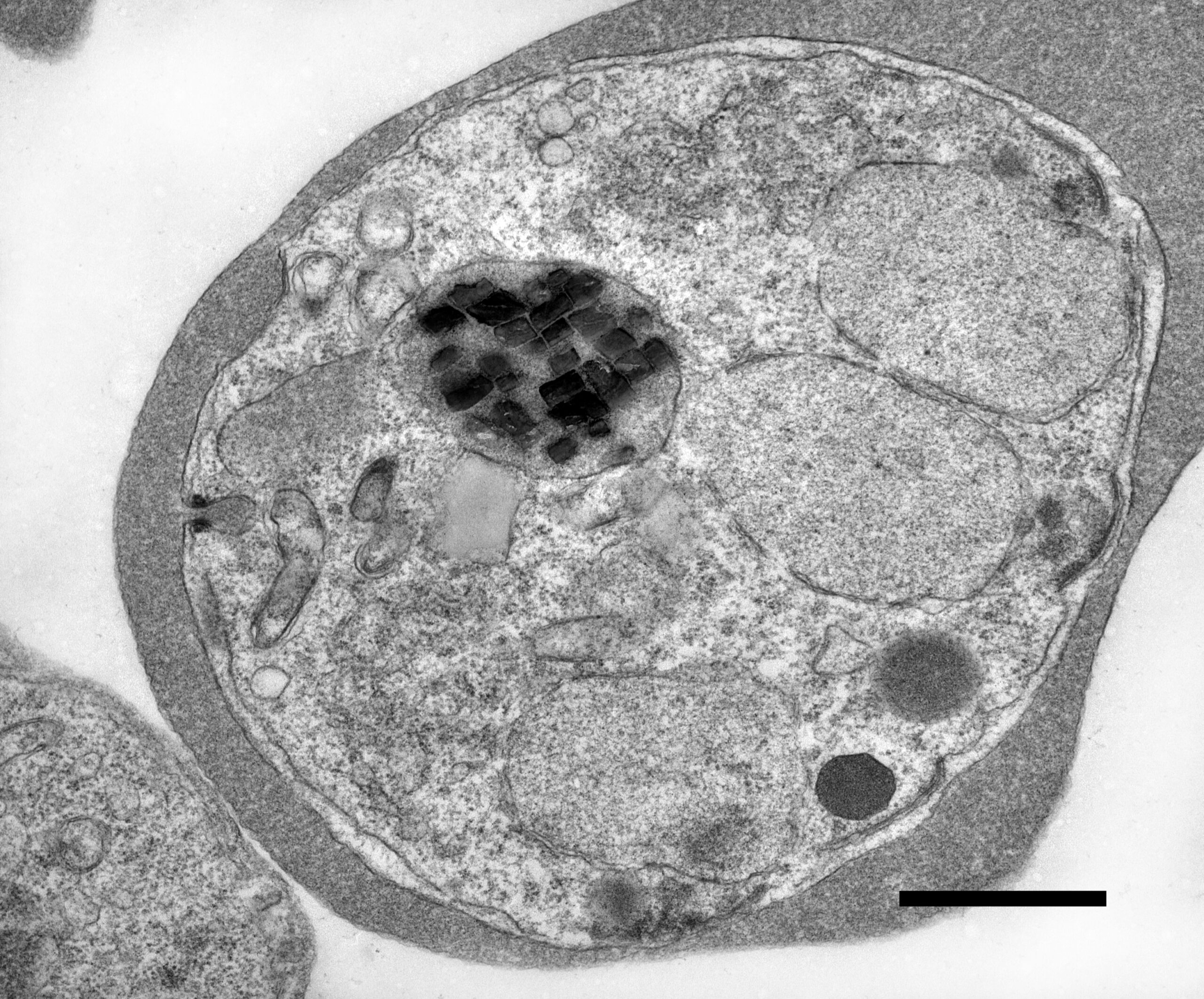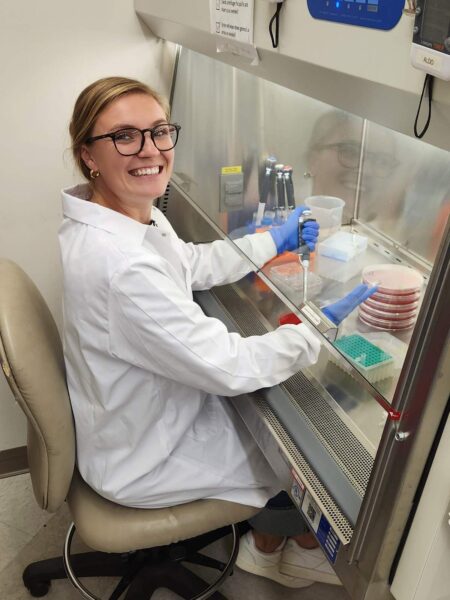
Malaria parasites infect red blood cells where they digest host hemoglobin and release free heme inside a lysosome-like organelle called the food vacuole. To detoxify excess heme, parasites form hemozoin crystals that rapidly tumble inside this compartment. Hemozoin formation is critical for parasite survival and central to antimalarial drug activity. Although the static structural properties of hemozoin have been extensively investigated, crystal motion and its underlying mechanism have remained puzzling. We used quantitative image analysis to determine the timescale of motion, which requires the intact vacuole but does not require the parasite itself. Using single particle tracking and Brownian dynamics simulations with experimentally derived interaction potentials, we found that hemozoin motion exhibits unexpectedly tight confinement but is much faster than thermal diffusion. Hydrogen peroxide, which is generated at high levels in the food vacuole, has been shown to stimulate the motion of synthetic metallic nanoparticles via surface-catalyzed peroxide decomposition that generates propulsive kinetic energy. We observed that peroxide stimulated the motion of isolated crystals in solution and that conditions that suppress peroxide formation slowed hemozoin motion inside parasites. These data suggest that surface-exposed metals on hemozoin catalyze peroxide decomposition to drive crystal motion. This work reveals hemozoin motion in malaria parasites as a biological example of an endogenous self-propelled nanoparticle. This mechanism of propulsion likely serves a physiological role to reduce oxidative stress to parasites from hydrogen peroxide produced by large-scale hemoglobin digestion during blood-stage infection.


